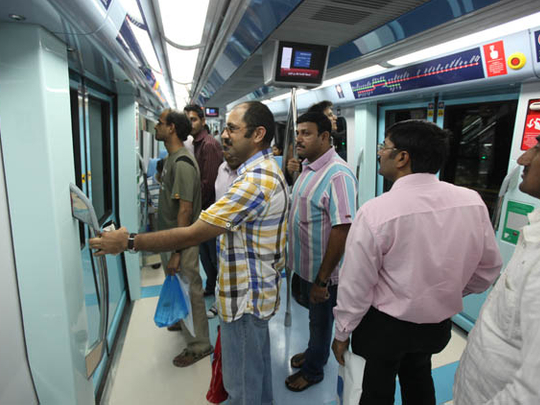
Dubai and its residents, citizens and expatriates, are to be congratulated on yet another major addition to the infrastructure of the city.
Exactly two years to the day after commissioning the Red Line of the Dubai Metro, the Green Line was commissioned on September 9 by His Highness Shaikh Mohammad Bin Rashid Al Maktoum, Vice-President and Prime Minister of the UAE and Ruler of Dubai.
Indeed Dubai is now well into the membership of the elite club of 160 cities around the world with a developed Metro public transport system carrying millions of passengers to their destinations in the most efficient, economic and environment friendly fashion.
The Dubai Metro being 75 kilometres long is the longest fully automated driverless system in the world.
There is no doubt that the bus system and the Metro have reduced the energy requirement for transport in Dubai and the new line will enhance that gain if not multiply it. The International Association of Public Transport estimates that an energy equivalent of one kilogramme of petrol per person will allow a car to travel 19 kilometres, a bus 38 kilometres and a train 48 kilometres and, therefore, the Metro will be the most energy efficient per passenger-kilometre.
No harmful emissions
Fifty years ago, transport energy in the world was 15 to 20 per cent of total energy consumption. Today it is probably over 50 per cent and increasing. Therefore using public transport and the train systems in particular are the way to optimise energy consumption, not only to cut costs but to maintain and improve the environment and air quality and hence public health.
Electrically driven trains mean there is no harmful emission of gases such as those associated with petroleum fuels as in cars or buses. The energy and emissions per passenger-kilometre in electric trains will still be the lowest even when the electricity generation energy and emissions are added.
Mattar Al Tayer, Chairman of the Board and Executive Director of the Roads and Transport Authority (RTA), recently indicated that Dubai, which was losing Dh4.6 billion per year due to traffic congestion until 2007, has saved Dh35.7 billion in time and fuel due to RTA public transport projects which cost Dh60 billion. The Green Line will surely improve these numbers and when public transport's share increases as planned to 30 per cent by 2020 from the current 12.5 per cent, one can imagine the savings that will accrue.
More development
Sceptics are no longer around as the success of the Dubai bus system followed by the greater success of the Metro's Red Line in two years has fully convinced all shades of people of the utility and social value of public transport. Judging by the newspaper interviews, residents of Dubai were anxious to see the completion of the Green Line, especially for people living in the most populated part of the city where the line is passing. The numbers are also telling. In October 2009, 1.8 million passengers used the Metro and this number increased to 5 million by August and currently 950,000 passengers use all modes of public transport every day.
We are told that the Green Line is expected to handle 120,000 passengers per day while the Red Line serves 180,000 passengers a day.
However I dare say that these numbers will be exceeded because the impact of one line over the other is yet to be seen.
The impact on city planning should be noticeable in a few years. I hope that the areas around the Metro lines are given priority for development to increase the utilisation of the system and to limit the costly horizontal expansion of the city.
I know that taxi drivers are worried. They and their companies do a great public service and the impact of public transport on them should be addressed so that they become complementary contributors to the success of the mobility systems for all people.
Saving fuels, reducing congestion and improving the environment are aims of any city authority. RTA has said that car utilisation in Dubai is 1.6 persons per vehicle and therefore the projected passengers that will use the Green Line will take a lot of vehicles off Dubai roads, thereby reducing fuel use, congestion and improving the quality of life.
The writer is former head of the Energy Studies Department at the Opec Secretariat in Vienna












